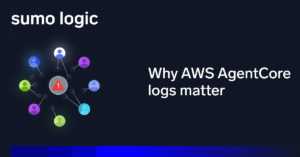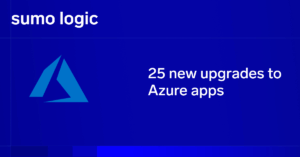
It’s safe to say that Generative AI and the launch of GPT4 caused the most excitement – and fear – in technology in
2023. It’s not surprising with its possible areas of application and ease of use. Even schoolchildren are using it!
It’s been the main topic of conversation at major tech conferences and publications, company boardrooms, within
product and engineering teams, and even with families at dinner tables – but maybe that’s just my family’s dinner
conversation. With so much interest and concern, no one should be surprised when questions of efficiency gains are
asked this time next year to every team across the business.
So what does it mean to be prepared? At Sumo Logic, we’ve been asking ourselves these questions as a starting point
to make sure we’re building and bringing value to customers in 2024 and the years ahead.
AI hallucinations: Are they a feature or a bug?
In a recent product meeting, one of my data scientists remarked that they didn’t even know our queries could work
this way. Of course we must ask, what about Gen AI enables this level of creativity? I argue that this is because
the technology can hallucinate and try things that are considered outside the norm. If we treated hallucinations as
a bug to be fixed, we could accidentally kill the technology’s ability to bring creativity, insight, and even
innovation to the table.
Most conversations about AI hallucinations are causing fear in the market, but I argue that the true culprit isn’t
the hallucination but the tone. The biggest issue with ChatGPT is that it represents its answers so definitively.
Typically for ideation and brainstorming, you need to be creative and leave room to be wrong.
When we stop treating our AI brainstorming partner as an arbiter of truth, but rather as a partner in creativity, we
can work toward solving incredibly hard new problems for customers using the natural strengths of this technology,
which includes its hallucinations.
Systems of record vs systems of insight
If we accept that Generative AI isn’t the source of a definitive answer for our customers, what additional
technologies do we need to use? This is where systems of record become vital.
A system of record is the authoritative data source, fact or piece of information. It’s what powers the typical IT
system today, for example, logs, databases, service maps, integrations, tribal knowledge, etc. In this case, the
more data you can connect to the system, the more powerful it can become.
Also, as it is the authoritative piece of information, a “source of truth” it must be 100% correct. But it’s hard to
manage and leverage in real time, and that’s why auto-generation and auto-discovery for systems of record are so
critical.
While the phrase “single source of truth” has been around for a long time, for developers, security and operations
teams, it’s often far more nebulous. That’s why logs have emerged as vital, serving
as the atomic level of truth – the log is the only artifact that is naturally and automatically generated by
applications and infrastructure, making it an obvious foundation for a system of record.
Meanwhile, I consider generative AI as something akin to a “System of Insight”, where technology can give you
additional insights you didn’t have before.
For example, in a previous role, I needed to do a 60-minute presentation about “innovation” to a room full of interns
and associates. Without any idea of what to present, I did what any of us do. I went to Google and typed
“innovation” into the search bar before scrolling through tons of websites, pictures, and videos. Ultimately, I
discovered a picture of a turtle with F1 racing wheels that served as part of my presentation.
While I didn’t search for “turtle with F1 racing wheels”, it inspired my work – just as Google Search inspired my
thinking, AI can use its system of insights to provide thought partnership that goes beyond search alone.
By combining systems of record and systems of insight we will create new solutions that can give customers definitive
answers on their own data.
What does this mean for developers, operations and security engineers?
It is both an exciting and dangerous time in technology and software. I think folks like Microsoft and GitHub have it
right when they use the naming convention “copilot”
as the name suggests that the technology is helping you do your job better rather than trying to replace you.
I can foresee similar copilot innovations emerging in areas like testing, observability and security as the critical
connection between systems of record and insight are solidified. It could mean faster onboarding, especially when
it’s easier to ask more natural and deeper questions of your systems like “What can I do to improve the cost and
security of my infrastructure?” It could also help automate redundant tasks, particularly when it comes to
reporting.
The dangers are also apparent as AI introduces potential security and legal issues. At a recent innovation roundtable
(no F1 turtles this time) I attended, the top concern executives had were about the legal ramifications of AI.
Depending on how the LLMs and FMs are trained, there are potential legal concerns, notably around training your
models using other people’s IP. This brings up an entire supply-chain question, including IP and intentional
poisoning of information or code. That’s not to mention the “direct threats” when AI is used for social engineering
or to write malicious code or malware.
To maximize upside and minimize risk, all leaders of developer, operations, and security engineers should be
instituting basic best practices now.
- Where in your code should you use AI, or not? Will you be using generative AI to help you write code in your
core IP? The most important practice is to put policy in place. Code can quickly proliferate through your
product, and you’ll want to have visibility into how much of that was AI-assisted. - Where will you get the most benefits from AI? Pick the specific areas that would benefit the most from combining
systems of insight with systems of record and train the LLMs to get better with just that code base first. - Plan for your systems of record and systems of insight to align for future business success. While these
processes and systems are in their nascent stages of interconnecting, unlocking their combined potential will be
critical as your organization takes the next technological leap.
At Sumo Logic, we’re thrilled to embrace technologies like generative AI. More and more DevSecOps teams are realizing
that logs can serve as the common language and system of record for team collaboration – adding a system of insight
to it will make its impacts exponentially greater. We already have the industry’s most scalable log analytics
platform, which is becoming the foundation for breaking silos and building collaboration.




